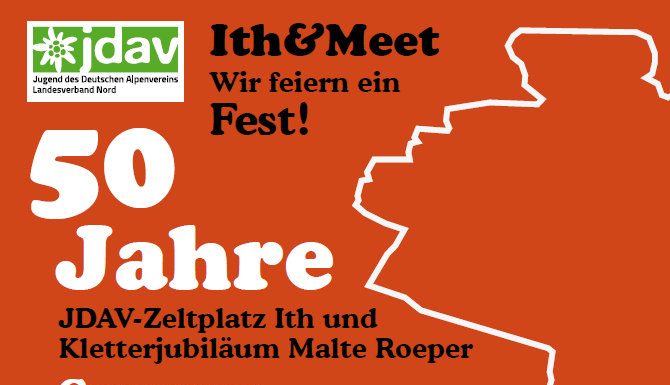Cédric Perillat-Merceroz on an A2/A3 pitch on Rolling StonesJon Griffith, 25 Feb 2011© Cédric Perillat-MercerozInfamous French Alpinist Patrice Glairon Rappaz and young uber-alpinist Cédric Perillat-Merceroz have been pushing hard over the last few weeks. They completed an ascent of Rolling Stones on the north face of the Grandes Jorasses and the Harlin-Direct on the Eiger north face.No newcomers to hard alpine climbing, the pair also teamed up for the first winter ascent of Aux amis Disparus on the Matterhorn graded at ED/6B/A3 last Febuary (2010).First put up by the Slovenains Jroslav Rutil, Thomas Prochaska, Ludek Schlechta and Jiri Svejda in July 1979, Rolling Stones has not seen much attention and this ascent is only the 4th winter ascent (it is no longer viable as a summer line due to the hotter summers). The route follows a line to the left of the Cassin on the infamous Walker Spur. With sustained difficulties of A3, 80 degree mixed, and 6a rock climbing the pair spent four and a half days on the face before topping out on the mythical Grandes Jorasses summit on the 18th January.Five days earlier they headed up accompanied by two friends to the base, which in itself proved 'Himalayan' due to the kit and the amount of unconsolidated snow they had to skin through. The pair reported sustained and involved climbing, with four uncomfortable bivouacs which got worse and worse the further they got into the climb. Added to the difficulties, the current short winter days meant they often found themselves climbing far into the night in order to reach the next bivy ledge. The main difficulties lay in the first part of the route with multiple pitches of rock and steep mixed on compact rock, then higher up on the central rock bastion, most notably a very delicate and dangerous A2/A3 pitch- commented Patrice. But apart from losing a rock shoe and having to climb the 6a slab pitch in one rock shoe and one mountain boot the pair reported no other dramas and after a long wade back down the Italian side of the Jorasses into Italy, were planning their next climb.Photos – Rolling Stones, Grandes Jorasses:
 Less than two weeks later and the pair were in Grindelwald, Switzerland, eyeing up their next target: the Harlin-Direct on the north face of the Eiger. This time they teamed up with veteran Chamonix alpinist Paulo Robach. The Harlin Direct was first put up in March 1966 after two completely separate teams arrived at the mountain with the same objective in mind- to find a direct route up the north face. The account of the first ascent is a story in it's own right, but after a month on the mountain where both teams had to endure cramped bivouacs and the Eiger's notorious weather, both teams emerged together on the summit on the 25th March. John Harlin was killed when a jumar rope snapped under his weight only days away from the top and the route was named after him.
In the winter of 1970 a Japanese team spent three months on the route, fixing 2355m of fixed rope. The super strong team of Alex Macintyre and Tobin Sorrenson blasted up the route in 4 days in the Autumn of 1978 without any use of fixed lines making it the first alpine style ascent. In 1990 another milestone was broken as the infamous Slavko Sveticic soloed the route in 26 hours on the 15th January – although he used the fixed ropes, left in place by previous parties. His line was not the full Direct as it joined the 1938 route towards the top at the height of the Spider. This variation was to be repeated by a team of Russians over 7 days in February 1997. On the 20-22 September 2010 Robert Jasper and Roger Schaeli completed the first free ascent giving it difficulties of 7a/ M8/ E5 (due to the rather run out nature of some of the pitches).There had still not ben a winter alpine style ascent of the Harlin, and Cedric, Patrice and Paulo had their eye on this prize.On the 30th January they found themselves at the base of the Eiger. Heavy haul bags made the approach hard but still a lot quicker and easier than for the Jorasses a couple of weeks before hand. Armed with Jasper and Schaeli's topo they still did not have any concrete information on how to exit via the original route, instead of the variation that had become the norm to exit via the 1938 route. After leaving their haul bags at the base of the route they spent one last warm night in the train station toilets before heading up early the next morning.
The climbing difficulties started straight away and would typify all that was still to come. Robach set off first and was plunged into a V+ corner blocked with numerous snow mushrooms that required strong mixed skills backed up with a lot of cleaning work. After this the climbing continued at a steady difficulty, not made any easier for the seconds who had huge haul bags (30kg) on their backs. The first day passed without incident though and after much exertion they arrived at the first bivy; 'Window Wall'. „Comfortably settled in our bivy, we did not yet know that this 'Wall' above us would be such a struggle the next day. Winter conditions and its steepness obliged us to aid the majority of the way up it…a few compact sections forced us back into pretty engaging free climbing mode. The outcome of the day was hard to accept: 80m of climbing in only 10 hours. We chose to avoid an uncomfortable bivy in etriers by fixing lines back down to our previous bivy.“ commented Cedric.The third day was a long one. Once back up the fixed lines they continued up poor rock and snowed up slabs. 'Huge snowmushrooms hid mediocre rock which was difficult to protect' commented Cedric. However they found a sheltered niche in which to bivy in allowing them yet again another comfortable night on the face.The fourth day found the team on less steep terrain which had the advantage of less hard climbing but a nightmare for the seconds as they could no longer haul their heavy kit. Early afternoon and they arrived at Death Bivy. Two climbers who had left the day before on the 1938 route had chopped out two big ledges already and after ditching their kit there the trio headed off to fix a few more pitches before it got dark.
Paulo Robach on the first corner pitchJon Griffith, 25 Feb 2011© Cedric PERILLAT-MERCEROZBack at Death bivy and the exhaustion started to settle in:“That night, more so than the others, we felt exhausted. The day had been another long and physical one; added to that we had to fight against the intense cold that a strong wind had brought onto the face. But it didn't matter, as the next day would be even worse…“The fifth day saw them head back up their fixed lines and into easier but nevertheless engaging and run out mixed climbing. The difficulty in protecting the rock led to long and incredibly cold belays. Whilst they didn't manage to exit out of the rock bastion between Death Bivy and the Spider they managed to excavate a terrace big enough to pitch their Ascent tent. But the wind had picked up over the course of the day and they were buffeted by spindrift all night as the three of them squeezed into an already cramped two man tent. Day 6 dawned with lower air temperatures and a stronger northerly wind. By 1PM they were on the bottom slopes of the Spider. The continuation of the Harlin Direct takes a veering rightwards line out of the Spider and direct up to the summit. The weather forecast had predicted even stronger winds over the next few days and they had enough food to last them another two bivies at a push. However the rest of the Harlin is reported to be steep and very loose rock; combined with the intense cold and the information that it was going to get worse they didn't take long to decide to head off over and join the exit of the 1938 route. Heading up the final pitches of the 1938 route the wind picked up and by the time they got to the summit ridge they were being buffeted around by a 70km and hour northerly wind- the bulky haul bags not being the most aerodynamic thing in the world. After a late departure on the 7th day in a very wet and humid tent the trio headed off for the last windy few meters to the summit.On having to bail from their intended objective of the full line it seems that they had made the right choice as Cedric simply put it:“The 70km an hour winds did not leave us with any regret of not doing the first winter alpine style ascent of the Harlin Direct“. An amazing effort nevertheless.Photos – Harlin Direct, Eiger:
Cedric and Patrice are now on standby for their next project on the Matterhorn this time, so as to complete this years winter trilogy. Patrice Glairon Rappaz is sponsored byMilletandPetzlCedric Perillat-Merceroz is sponsored bySnap andPetzlReport by Jon Griffth – UKC Gear Tester and Professional Photographer. Check out his Chamonix blog here: Alpine Exposures. Diesen Artikel inkl. Bilder auf UKClimbing.com anschauen



![[VIDEO] Irmgard Braun: Record Breaking Rock Climber Who Gets Stronger Every Year Irmgard Braun: Record Breaking Rock Climber Who Gets Stronger Every Year (c) Hannah Morris Bouldering](https://www.climbing.de/wp-content/uploads/2025/11/youtube_MpAJEENfEjg-218x150.jpg)

![[VIDEO] The Challenge – Steve McClure The Challenge - Steve McClure (c) Petzl Sport](https://www.climbing.de/wp-content/uploads/2025/11/youtube_mfK9ynVsDvI-218x150.jpg)
![[VIDEO] Silence 9c/5.15d – The journey begins for Will Bosi Silence 9c/5.15d - The journey begins for Will Bosi (c) William Bosi](https://www.climbing.de/wp-content/uploads/2025/11/youtube_ujb7YRfE-7k-218x150.jpg)
![[VIDEO] Yosemite Crack Testpiece: Connor Herson on Magic Line Yosemite Crack Testpiece: Connor Herson on Magic Line (c) Fusis Films](https://www.climbing.de/wp-content/uploads/2025/10/youtube_h4GEt5iSZpA-218x150.jpg)
![[VIDEO] Hardest Trad Flash Ever | Adam Ondra | Lexicon E11 Hardest Trad Flash Ever | Adam Ondra | Lexicon E11 (c) Mammut](https://www.climbing.de/wp-content/uploads/2025/06/youtube_SAUyrDLG5xM-218x150.jpg)
![[VIDEO] Slate Experience: Marmot PROs Steve McClure & Leah Crane (Part 3)](https://www.climbing.de/wp-content/uploads/2014/12/youtube_XGtDnm4oNBA-150x150.jpg)
![[VIDEO] Statement of Youth anniversary film](https://www.climbing.de/wp-content/uploads/2014/12/youtube__nGdx1IGh48-150x150.jpg)
![[VIDEO] Klettern in Thailand](https://www.climbing.de/wp-content/uploads/2014/12/vimeo_24745042-150x150.jpg)
![[VIDEO] Little Cottonwood Canyon Classics - Teil 1](https://www.climbing.de/wp-content/uploads/2014/12/vimeo_31351066-150x150.jpg)









